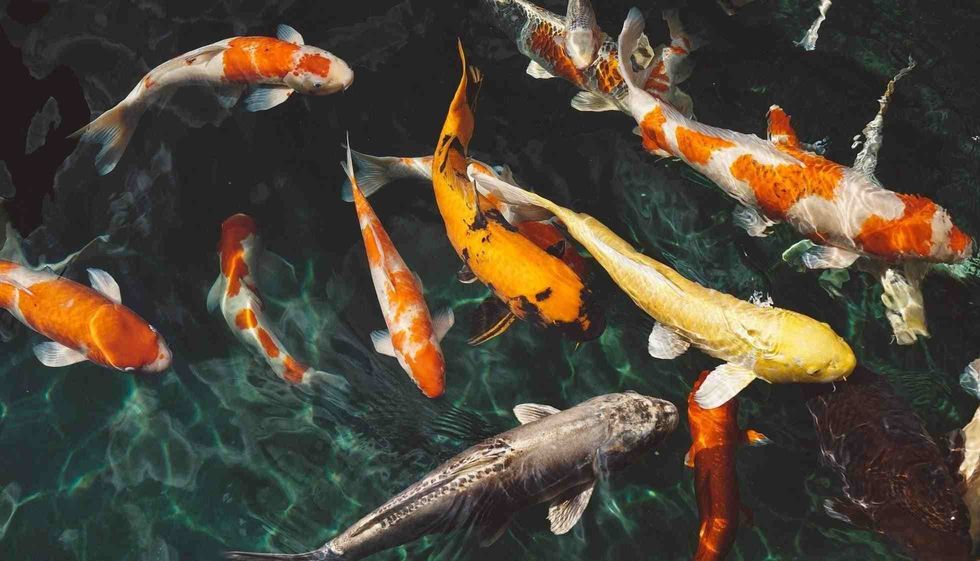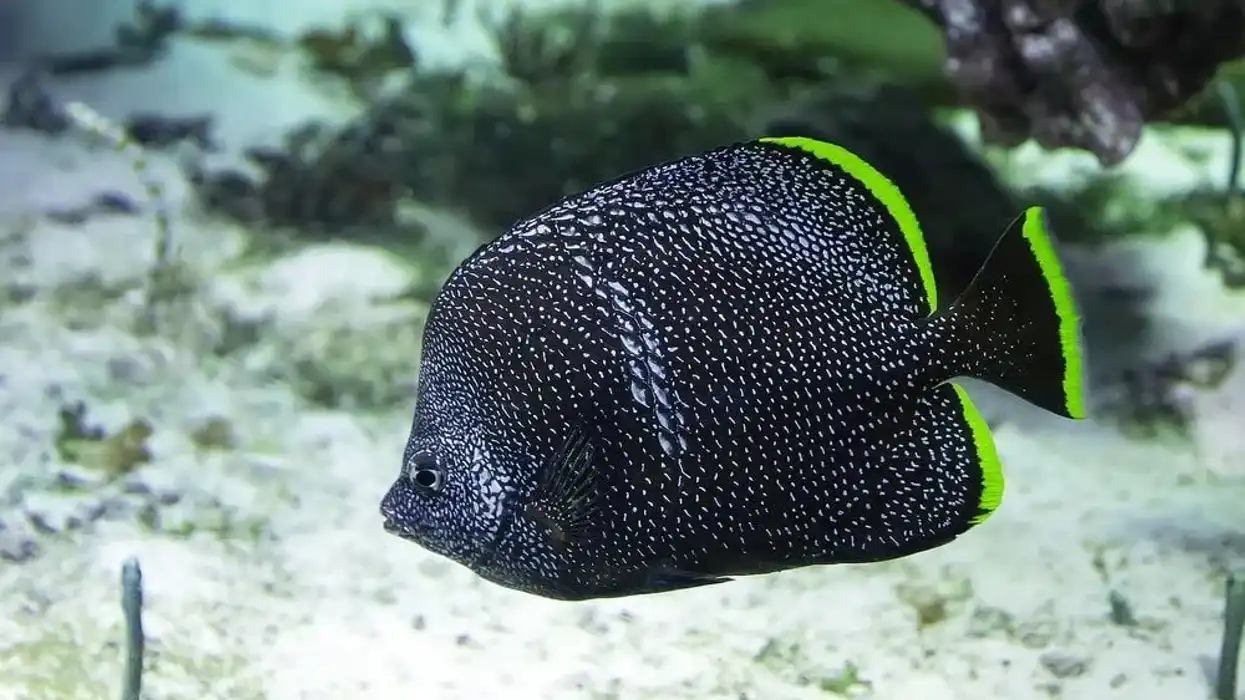Koi fishes are an extremely popular domestic fish in Japan. This fish is a native of Japan with a rich history.
In the hearts of the Japanese people, this fish owns a very special place. If you are a fan of aquatic animals, then you must be very eager to know more about this fish species.
If yes, then these fishes will appear interesting to you. There are over hundred types of koi fish found in the world, including ane koi fish, nyan koi fish, butterfly koi fish, blue koi fish, lala koi fish, red koi fish, king koi fish, blackwater creek koi fish, black koi fish and more.
Let’s read about all the interesting koi fish facts along with facts about koi fish habitat. After you are done reading these facts about koi fish, you may also look at rockfish facts and wrasse facts.
Koi Interesting Facts
What type of animal is a koi?
A koi is a freshwater fish of the cyprinidae family. These fishes have a long body, and they vary in color like white, blue, or red. These fishes are known to spread love among the Japanese as the word koi means love in Japan.
What class of animal does a koi belong to?
A koi fish belongs to the actinopterygii class of animals.
How many koi are there in the world?
There are around 100 types of koi fishes in the world. They are present in abundant amounts. However, the exact figure of their population is not known.
Where does a koi live?
Koi fishes are natives of freshwater bodies of Japan.
What is a koi's habitat?
Wild koi habitat includes freshwater bodies near the Black Sea, Caspian Sea & Aral sea. Now, the koi fishes are well known to the entire world, and they are found almost everywhere.
Who do koi live with?
A koi fish is a highly social fish who does not mind living with other fishes. So, you can find them living in groups with other fishes.
How long does a koi live?
The average lifespan of a koi fish is 25 to 35 years.
How do they reproduce?
Just like the other fish species, koi fishes also reproduce by the spawning method. In this method, the fishes lay thousands of eggs, and males fertilize these eggs.
Koi fishes lay around 1,000 eggs, and that's why they can produce a large number of offspring in a single breeding season. There are professional breeders who are engaged in fish farming and ensure that there is a steady supply of these fishes.
What is their conservation status?
The conservation status of koi fishes is currently of Least Concern. They are present in abundant amounts. However, the exact figure of their population is not known.
Koi Fun Facts
What do koi look like?
Koi is a fish with a long body. They can be white, blue, black, red, white, cream, & yellow in color. The color of the fish will usually depend upon the type of fish. Along with the colors, there can be fishes with spots, and these spots also vary depending upon the fish species.
How cute are they?
Koi fishes do not have a very cute appearance. But because of their social nature, they are a very good choice for domestic fish.
How do they communicate?
In order to communicate, the fishes usually create vibrations, sounds, motion, impulses and various smells.
How big is a koi?
A jumbo koi can grow up to 36 in (91 cm) long, which makes it almost six times bigger than a clownfish.
How fast can a koi swim?
A koi fish can swim at a speed of 1-3 mph (1.6-4.8 kmph).
How much does a koi weigh?
The average weight of a koi fish is between 30-35 lb (13-15 kg).
What are the male and female names of the species?
There is no special name for their male and female species. They are simply called a male koi fish and a female koi fish.
What would you call a baby koi?
A baby koi is known as a fry or fingerling.
What do they eat?
Koi diet consists of food products like small bugs, insects, plants, and algae growing at the bottom of the aquarium.
Are they dangerous?
No, not at all. These fishes are very friendly, and they do not pose any threat. But yes, sometimes the older fishes can bite, but the chances for such behavior are extremely rare.
Would they make a good pet?
Absolutely, a koi will make a good pet. These fishes are peaceful and social fish, so if you want to add this fish to your aquarium, then you should surely go for it.
Did you know...
In Japan, the parent generations pass down koi fishes to the younger generation as a sign of their family legacy.
A koi named Hanako lived for over 226 years and is said to be the oldest koi fish.
Having your own koi
A koi fish price can range between 10 to 100 USD.
If you are planning to have your own koi, then here are some important tips which you should keep in mind. The first thing to be kept in mind is that koi fishes grow rapidly, and that's why owners should make sure to provide it with ample space. The young koi fishes can be kept in indoor aquariums.
The koi pond or aquarium should be kept in an area where there is no direct sunlight falling on it. Always cover the aquarium.
This will reduce the rate of evaporation. If you wish to transfer your new koi fish to an aquarium, then for this you have to make them float in the water inside their bags, for at least ten minutes, so that they can adjust well to the change of water temperature.
If your fishes are living in an indoor aquarium then make sure you do not add more than three new koi in a single time. Provide your koi fish pond or aquarium with proper heat, light, temperature, and filtration.
What does koi mean?
The word koi in Japanese stands for love. This Japanese koi may represent a symbol of love for the Japanese and that’s why they are named koi.
What do koi fish represent?
Koi fish represent wealth and prosperity and are thought to bring serenity, perseverance, character strength, accomplishment, good fortune, courage, and ambition. Metallic koi symbolize success in business and career, whereas gold koi fish represent wealth.
How to draw a koi fish
Drawing a koi will become super easy if you follow the steps mentioned below:
Firstly draw a circle. This circle will be the head of your fish, so draw this circle at the position where you will be having the head of your fish.
Now, from each side of the circle, draw two curved lines. These two curved lines will form the body of your koi fish. Now from the end of the two curves, make an M-shaped line.
This will form the tail of the fish. Now draw the fins of your fish.
The fins of your koi fish should be irregular in shape, and there should also be a pectoral fin on each side of its head and two more fins near the tail. Now add some detailing to your fish, make its face look more flat than round.
Now, erase all the rough lines. Add some more fine detailing to your koi fish, like the scales, eyes & mouth. The scales should be made almost all over the body except the head and tail.
With this basic structure, your fish is ready, now all you have to do is color it. Koi fishes are generally white, brown, orange, red, green, and gold.
Here at Kidadl, we have carefully created lots of interesting family-friendly animal facts for everyone to discover! Learn more about some other fish including tang fish, or stingray.
You can even occupy yourself at home by drawing one of our realistic koi coloring pages.










